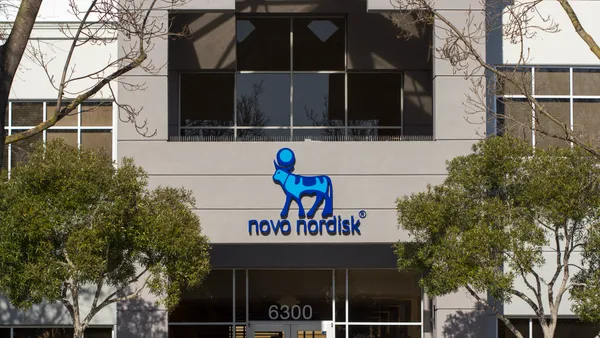20 S e p t e m b e r 2 0 07 VIEW on Marketing COMMUNICATION STRATEGIES H ow many of us have heard “you have two ears and one mouth for a reason” from parents, teachers, or even friends trying to tell us that we are talking too much? Despite knowing this adage to be true, we all tend to want to say more than we should and listen less than would be beneficial. Most people in the industry are worried that marketing communica� tions as we know it faces its demise because of digital media and the Internet. Now more than ever, therefore, the focus needs to turn to the basics: specifically how to communicate better with customers regardless of the medium. To cut to the chase, as communicators we say too darn much in pret� ty much everything that we as an industry deliver for our clients’ marketing arsenals. It doesn’t matter if it’s interactive or printed on paper many of us have become comfortable with saying everything and ultimately saying nothing. As a result, time is wasted, the authors wouldn’t even consider including much of the work in their own creative portfolios, and most importantly, efforts aren’t generating the results they could for brands. More is Less In general, it is close to impossible for a rep to get through the 14 to 40�page sales aids during a physician sales call. If anyone wonders why con� sumer creative types worry about jumping to the “dark side” of pharma, look no further : flash cards filled with so much data in 10� to 12�point fonts that “flash” is hardly an apt description; ad campaigns filled with enough features and benefits to make a used�car salesman blush; and Websites so muddled in data that Magellan couldn’t even navigate them efficiently. Somewhere along the way healthcare communicators seem to have forgotten that, as Louise Brooks said, “Writing [in this case writing about a brand] is 1% inspiration, and 99% elimination.” Selling, which is what everybody in this business is fundamentally work� ing toward and helping to do through brand authorship efforts, requires sacrifice. It means marketers must avoid saying everything or their cus� tomers will hear nothing. The used�car salesman referenced above got his stereotype from a dia� tribe akin to auctioneers. He just kept saying things faster and faster until something stuck, or until he just wore his prospective customer down. Communications executives and leaders don’t have that luxury. They are pressed for time when communicating with physicians. Moreover, physi� cians expect to be communicated with as pros, even as peers.They don’t want quantity; they want quality. And they demand relevance. On the Road to Recovery The first step on the road to recovery is recognizing that there is a problem. Medicine isn’t a soft drink, an automobile, or a really cool new cell phone/iPod/Web browser/YouTube watcher. Healthcare is serious stuff and can mean the difference between life and death. The truth is everything is important. All the information we’re trying to convey is needed to help a physician, caregiver, patient, or other healthcare professional make the best decision about a product or service. So, how can any feature and its associated benefit not be important? This applies to other products as well. While most consumers don’t pick a car just for its antilock braking system, built�in XM satellite radio, or hidden third seat in the back just in case it’s needed, these are beneficial fea� tures and they do make a difference in the overall purchasing decision. The more important truth, however, is that all of the features that make something great — whether the product is a car, medical device, or medi� cation — support a bigger story about the product itself.This bigger story is the message that needs to be communicated. Everything else becomes support, reasons to believe, and proof points. Catching the Meaning My creative partner, Guy Mastrion, has told a story for the decade�plus that we’ve worked together. He was working with a client who wanted to emphasize multiple ideas as the key message of a campaign in development. The account, planning, and creative teams got nowhere with this person despite counseling him that clarity and singularity of thought were essential. Finally, Guy brought in two tubes of tennis balls and started the meeting by tossing one to said client, which he caught. Guy then tossed the rest of the balls all at once, and the client didn’t catch any of them.The point is that by trying to say too much no one is going to catch anything regardless of how well the concept is brought to life — digitally or in any other format. Blaise Pascal said, “I have only made this [letter] longer because have not had the time to make it shorter.” His point was that to say something well and effectively requires time, focus, and realizing that not everything can be said. Done right, less can be more.With mouth shut and ears open, lesson learned. # Palio PALIO, Saratoga Springs, N.Y., an inVentiv Health company, is a full�service communications company that builds brands that will never be forgotten. For more information, visit palio.com. Mike Myers, President You Have Two Ears and One Mouth for a Reason By trying to say too much no one is going to catch anything regardless of how well the concept is brought to life — digitally or in any other format. 0907 PVV Layout PROOFS 9/11/07 4:06 PM Page 20 palio . client: palio . product: advertising . date: 8.30.07 . trim: 9.5 X 11.5 . live: .25 from trim . bleed: 9.75 x 11.75 PHARMAVOICE VIEW Seamless global neural networks. Say what? Media�neutral 360� penetration. Huh? ROI Up the Wazoo ^TM . Blah, blah, blah. Here’s the honest truth about advertising: No industry is more inept at talking about itself than the communications business. So, let’s cut to the chase about ad agencies, brand stewards, or whatever it is we’re calling ourselves this week. Choosing an agency is like buying real estate. One house is a charming (small) move�in�ready Victorian. Another has been mansionized to utilize every centimeter of the property line, with imported marble in all 50 bathrooms, and is so vast, one could easily feel lost in its cavernousness. Translation: Palio versus all those mutant, hypertrophic mega�agencies who shall go nameless. Sure, they’re smart. So are we; They’ve got MDs and PhDs. Talented writers and designers. Branding pros and strategic wizards. Ditto for us. But, as we’re based in the historically restorative city of Saratoga Springs, NY, we never have much to distract us from total focus on your business. Case in point: our talent pool. They’re not bored refugees from the pharma shop down the street. We be it. So we attract people from all over the world who share our passion to do great work before they’ve even unpacked their stuff. They’ve taken a calculated risk. Which, in case you’ve forgotten, is something you take every day of your working life. See what can happen when hardwired gut instinct is powered by more than 2500 years of medical and marketing experience. Call 518.584.8924. Ask for Mike Myers. Like his body double, Abe Lincoln, he’s also refreshingly honest. 10576_ncpmar_pharvc_view.indd 1 8/30/07 1:45:25 PM
An article from


You Have Two Ears and One Mouth for a Reason
Filed Under:
Commercialization








